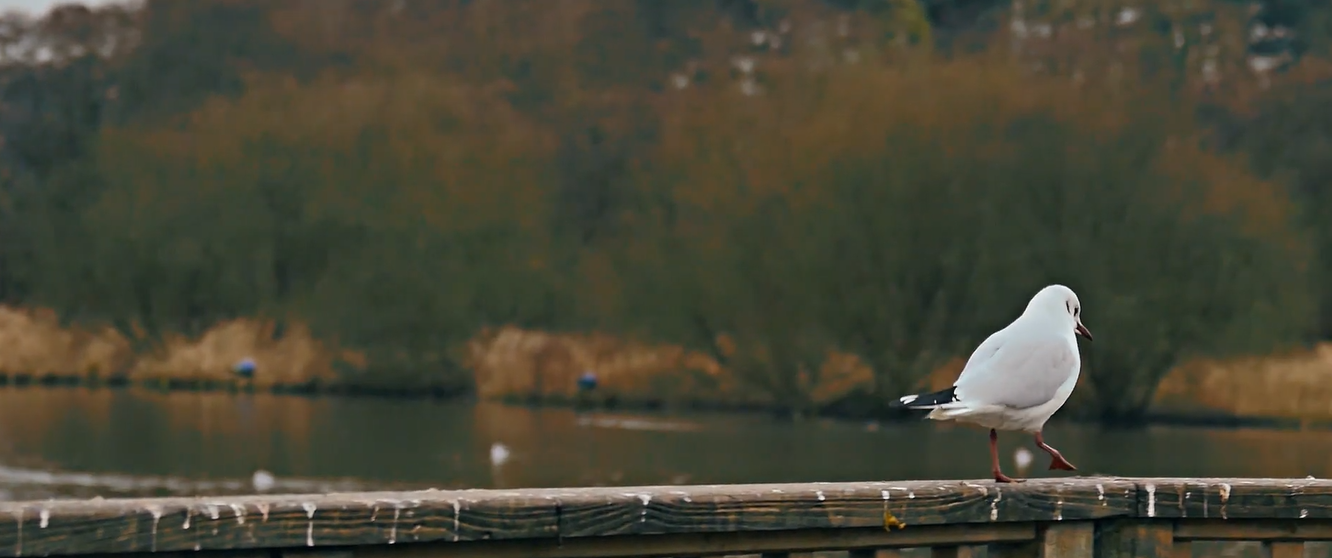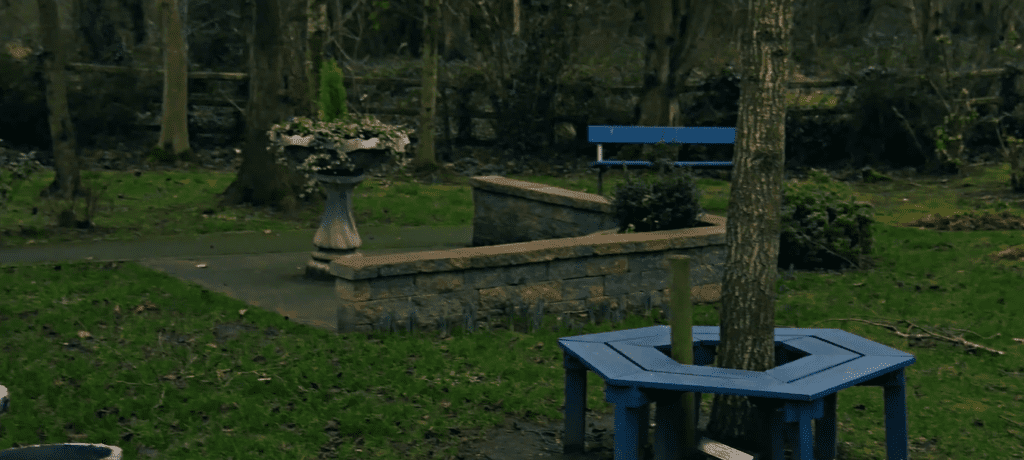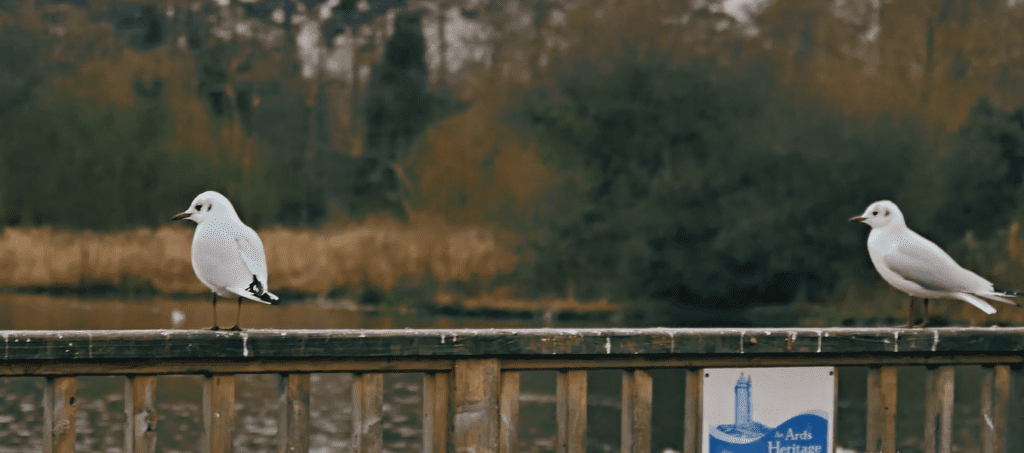Kiltonga Wildlife Reserve – Newtownards, Northern Ireland

Updated On: April 15, 2024 by Yomna Salah
With its rolling green hills and dramatic coastlines, Northern Ireland harbours hidden treasures that beckon nature enthusiasts and wildlife lovers alike. Among these gems lies the Kiltonga Wildlife Reserve, a serene sanctuary in Newtownards’ heart. Stretching across 17 hectares, this reserve boasts a rich tapestry of habitats teeming with diverse flora and fauna. As one delves into its lush woodlands, tranquil ponds, and meandering trails, a world of natural wonder unfolds, inviting exploration and discovery at every turn.
In this article, we embark on a journey to uncover the enchanting beauty and ecological significance of Kiltonga Wildlife Reserve. From its humble origins as sewage treatment works to its transformation into a thriving haven for biodiversity, we delve into the history and conservation efforts that have shaped this remarkable landscape. We’ll also explore the diverse flora and fauna that call Kiltonga home, from vibrant wildflowers to elusive mammals and captivating birdlife.
Beyond its ecological importance, Kiltonga offers many recreational opportunities, from leisurely walks along nature trails to birdwatching and photography excursions. We’ll delve into the various activities available to visitors and the educational programs and community engagement initiatives that foster a deeper connection to the natural world.
Join us as we venture into the heart of Kiltonga Wildlife Reserve, where every step reveals a new marvel, and every moment spent in nature leaves an indelible impression on the soul.
Table of Contents
History and Conservation Efforts
The history of Kiltonga Wildlife Reserve dates back to the mid-20th century when it was established as a sewage treatment works. However, in the early 2000s, the site transformed into a haven for biodiversity thanks to the concerted efforts of local conservation groups and government initiatives. Today, it stands as a testament to successful habitat restoration and preservation.
Managed by Ards and North Down Borough Council, the reserve is meticulously maintained to support a variety of ecosystems, ranging from wetlands and woodlands to meadows and ponds. This diverse habitat mosaic has enabled numerous plant and animal species to flourish, making Kiltonga a hotspot for biodiversity in Northern Ireland.
Flora and Fauna

One of the most captivating aspects of Kiltonga Wildlife Reserve is its rich biodiversity. The site is home to various plant species, including native wildflowers such as bluebells, primroses, and meadowsweet. These vibrant blooms carpet the landscape, creating a kaleidoscope of colours throughout the seasons.
In addition to its floral treasures, the reserve boasts a remarkable variety of fauna. Birdwatchers flock to Kiltonga to glimpse its avian residents, including kingfishers, herons, and waterfowl. The tranquil ponds and reed beds provide ideal nesting and foraging grounds for these feathered inhabitants.
Mammals also thrive within the reserve, with sightings of red squirrels, hedgehogs, and bats delighting visitors lucky to encounter them. The woodlands offer shelter and sustenance for these elusive creatures, adding to the reserve’s allure as a wildlife haven.
Conservation and Education
Conservation lies at the heart of Kiltonga Wildlife Reserve, with ongoing efforts to preserve its fragile ecosystems. Habitat management practices, such as controlled burning and invasive species control, help maintain the balance of plant and animal communities, ensuring the long-term sustainability of the reserve.
Education fosters appreciation for the natural world and promotes conservation awareness. Kiltonga offers educational programs and guided tours for schools and community groups, providing valuable insights into local ecology and environmental stewardship. These initiatives aim to inspire the next generation of conservationists and instil a sense of responsibility towards protecting our planet’s biodiversity.
Recreational Opportunities

Beyond its ecological significance, Kiltonga Wildlife Reserve offers recreational activities for visitors. Nature trails wind through the reserve, inviting hikers and walkers to explore its hidden corners and discover its secrets. Picnic areas provide a tranquil setting for families and friends to relax amidst nature’s splendour, while bird hides offer the perfect vantage points for observing wildlife up close.
Photography enthusiasts are drawn to Kiltonga’s picturesque landscapes, capturing the beauty of its flora and fauna through their lenses. Whether it’s a stunning sunrise over the wetlands or the graceful flight of a heron, there’s no shortage of inspiration for aspiring photographers.
Community Engagement
The success of Kiltonga Wildlife Reserve relies heavily on the support of the local community. Volunteer programs offer opportunities for residents to get involved in conservation activities, from habitat restoration to wildlife monitoring. These grassroots efforts foster a sense of ownership and pride among community members, strengthening their connection to the reserve and its inhabitants.
Events and workshops at Kiltonga serve as platforms for community engagement, bringing people together to learn, explore, and appreciate the natural world. Whether a guided birdwatching session or a wildlife photography workshop, these events offer valuable experiences for participants of all ages.
When to Visit Kiltonga Wildlife Reserve
The best time to visit Kiltonga Wildlife Reserve in Newtownards, Northern Ireland, largely depends on the type of experience you seek and the wildlife you hope to encounter. Spring, from March to May, is an ideal time to witness the reserve burst into life, with wildflowers blooming and bird activity at its peak as migratory species return to breed. The mild weather and longer daylight hours make it perfect for leisurely walks along the nature trails and picnics amidst the vibrant scenery.
Summer, from June to August, offers warmer temperatures and an abundance of wildlife, including butterflies, dragonflies, and nesting birds. It’s an excellent time for birdwatching and photography, with the lush foliage providing ample cover for observing elusive species. From September to November, autumn brings a riot of colours as the leaves change, casting a golden hue over the landscape. It’s a tranquil time to explore the reserve and witness the seasonal changes as wildlife prepares for winter. Finally, winter, from December to February, offers a quieter experience, with fewer visitors and a chance to observe resident bird species such as waterfowl and wintering thrushes. Regardless of the season, each visit to Kiltonga Wildlife Reserve promises a unique and memorable encounter with nature’s wonders.
Exploring the Surrounding Attractions near Kiltonga Wildlife Reserve
While Kiltonga Wildlife Reserve in Newtownards, Northern Ireland, offers a serene escape into nature, the surrounding area is brimming with additional attractions and points of interest to enhance your visit. From historic landmarks to cultural experiences, there’s something for everyone to enjoy in this picturesque corner of the country.
Mount Stewart
Just a short drive from Kiltonga Wildlife Reserve lies Mount Stewart, a magnificent National Trust property renowned for its stunning gardens and historic house. Immerse yourself in the beauty of the landscaped grounds, which feature a rich tapestry of plants, flowers, and exotic species from around the world. Explore the elegant interiors of the house, filled with exquisite furnishings, artwork, and memorabilia that offer a glimpse into the lives of the Stewart family.
Strangford Lough
Venture a little further afield to discover the natural splendour of Strangford Lough, one of Northern Ireland’s most breathtaking coastal landscapes. Take a scenic drive along the Lough’s shores, stopping at picturesque villages and harbours. Embark on a boat tour to explore the Lough’s tranquil waters, dotted with islands, wildlife reserves, and ancient ruins waiting to be discovered.
Scrabo Tower
Perched atop Scrabo Hill overlooking Newtownards, Scrabo Tower is a historic landmark offering panoramic countryside views. Climb the spiral staircase to the top of the tower for unparalleled vistas stretching across Strangford Lough, the Mourne Mountains, and beyond. Learn about the tower’s fascinating history and significance to the local community at the nearby visitor centre.
Exploris Aquarium
For a family-friendly outing, head to the Exploris Aquarium in nearby Portaferry. Dive into the underwater world as you explore a diverse range of marine habitats, from tropical reefs to native species found in the waters of Strangford Lough. Get close to sharks, stingrays, and seahorses, and learn about conservation efforts to protect our oceans and marine life.
Castle Espie Wetland Centre
Located on the shores of Strangford Lough, Castle Espie Wetland Centre is a paradise for birdwatchers and nature lovers. Explore the extensive network of trails that wind through wetlands, woodlands, and meadows, offering opportunities to spot various bird species throughout the year. Visit the bird hides to observe wading birds, ducks, and geese in their natural habitat.
Conclusion
Kiltonga Wildlife Reserve is a shining example of conservation success, showcasing the transformative power of habitat restoration and community engagement. Its diverse ecosystems provide a haven for many plant and animal species, making it a haven for biodiversity in Northern Ireland.
As visitors wander through its woodlands and wetlands, they are greeted by a symphony of sights and sounds, each more enchanting than the last. From wildflowers’ delicate beauty to birds’ majestic flight, Kiltonga captivates the senses and nourishes the soul.
In an age of increasing environmental challenges, places like Kiltonga Wildlife Reserve remind us to preserve our natural heritage for future generations. Through conservation efforts, education, and community involvement, we can ensure that treasures like Kiltonga continue to thrive, serving as sanctuaries for wildlife and sources of inspiration for all who seek solace in nature’s embrace.
FAQs
Are there any recreational activities available at Kiltonga Wildlife Reserve?
Yes, Kiltonga offers a range of recreational activities, including nature trails for hiking and walking, birdwatching opportunities, and photography excursions. Visitors can also enjoy picnics amidst the scenic surroundings and participate in guided tours and educational programs.
What kinds of wildlife can visitors expect to see at the reserve?
Visitors to Kiltonga can encounter a variety of wildlife, including birds such as kingfishers, herons, and red squirrels, as well as mammals like hedgehogs and bats. The reserve’s diverse habitats provide ideal conditions for supporting a rich array of flora and fauna.






